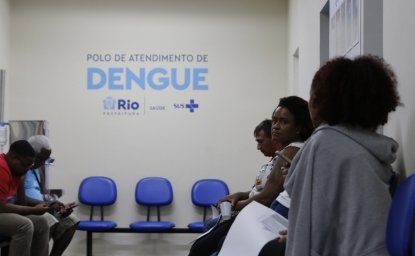
A blog of the Latin America Program
Like all countries, Mexico could greatly benefit from artificial intelligence (AI). KPMG expects more than half of Mexican companies will be using AI within three years. For now, however, progress is slow.
The Mexican AI ecosystem has invested in digital infrastructure and talent, but it still lacks a national vision and strategy for AI. As a result, other countries are leapfrogging Mexico; Mexico’s position in the Oxford Insight AI Government Readiness Index fell from 22nd in 2018 to 68th last year. Even so, efforts to develop a national AI strategy are stalled.
But there are reasons for the optimistic projections about AI in Mexico. Indeed, even absent a national strategy, groups of experts have been developing a vision and policy recommendations to accelerate the responsible development and deployment of AI technologies in Latin America’s second-biggest economy.
Former Mexico City Mayor Claudia Sheinbaum has expressed interest in technology and innovation to renew the government’s interest in the field.
Claudia Sheinbaum has expressed interest in technology and innovation to renew the government’s interest in the field.”
She will no doubt hear a great deal about the promise of AI, including for Mexico’s agriculture, health, and financial sectors–the priority industries for a new collaboration between the Eon Institute and the Wilson Center on the economic potential of AI in Mexico and the subject of a recent conference in Mexico City hosted by the two organizations.
Today, Mexico’s agriculture industry is poorly positioned to benefit from AI. There is limited information about the sector’s needs, little workforce training, inadequate digitalization and infrastructure, and insufficient government support. But the opportunities are clear and the agricultural sector is eager to explore uses of AI technologies.
The country’s health system faces different challenges in adopting AI, including concerns about privacy and bias. As a result, even health institutions bullish on AI are reluctant to move forward absent clear guidance on regulations. Mexico’s financial sector was expected to move faster, but it too has fallen short of expectations. Industry analysts are already warning of an “AI bubble,” with high expectations for productivity increases but stubbornly low AI adoption rates.
None of this is all that surprising, given the newness of the technology and the Mexican government’s approach, slow out of the gate. But given widespread interest in AI and the efforts spearheaded by civil society and industry, there is no doubt AI will one day live up to its promise for the Mexican economy.
Authors



Latin America Program
The Wilson Center’s prestigious Latin America Program provides non-partisan expertise to a broad community of decision makers in the United States and Latin America on critical policy issues facing the Hemisphere. The Program provides insightful and actionable research for policymakers, private sector leaders, journalists, and public intellectuals in the United States and Latin America. To bridge the gap between scholarship and policy action, it fosters new inquiry, sponsors high-level public and private meetings among multiple stakeholders, and explores policy options to improve outcomes for citizens throughout the Americas. Drawing on the Wilson Center’s strength as the nation’s key non-partisan policy forum, the Program serves as a trusted source of analysis and a vital point of contact between the worlds of scholarship and action. Read more


Mexico Institute
The Mexico Institute seeks to improve understanding, communication, and cooperation between Mexico and the United States by promoting original research, encouraging public discussion, and proposing policy options for enhancing the bilateral relationship. A binational Advisory Board, chaired by Luis Téllez and Earl Anthony Wayne, oversees the work of the Mexico Institute. Read more


Science and Technology Innovation Program
The Science and Technology Innovation Program (STIP) serves as the bridge between technologists, policymakers, industry, and global stakeholders. Read more

Explore More in Weekly Asado
Browse Weekly Asado
Dengue Haunts South America’s Summers

Lessons from Costa Rica’s Economic Transformation

Women and Latin America’s Digital Revolution

